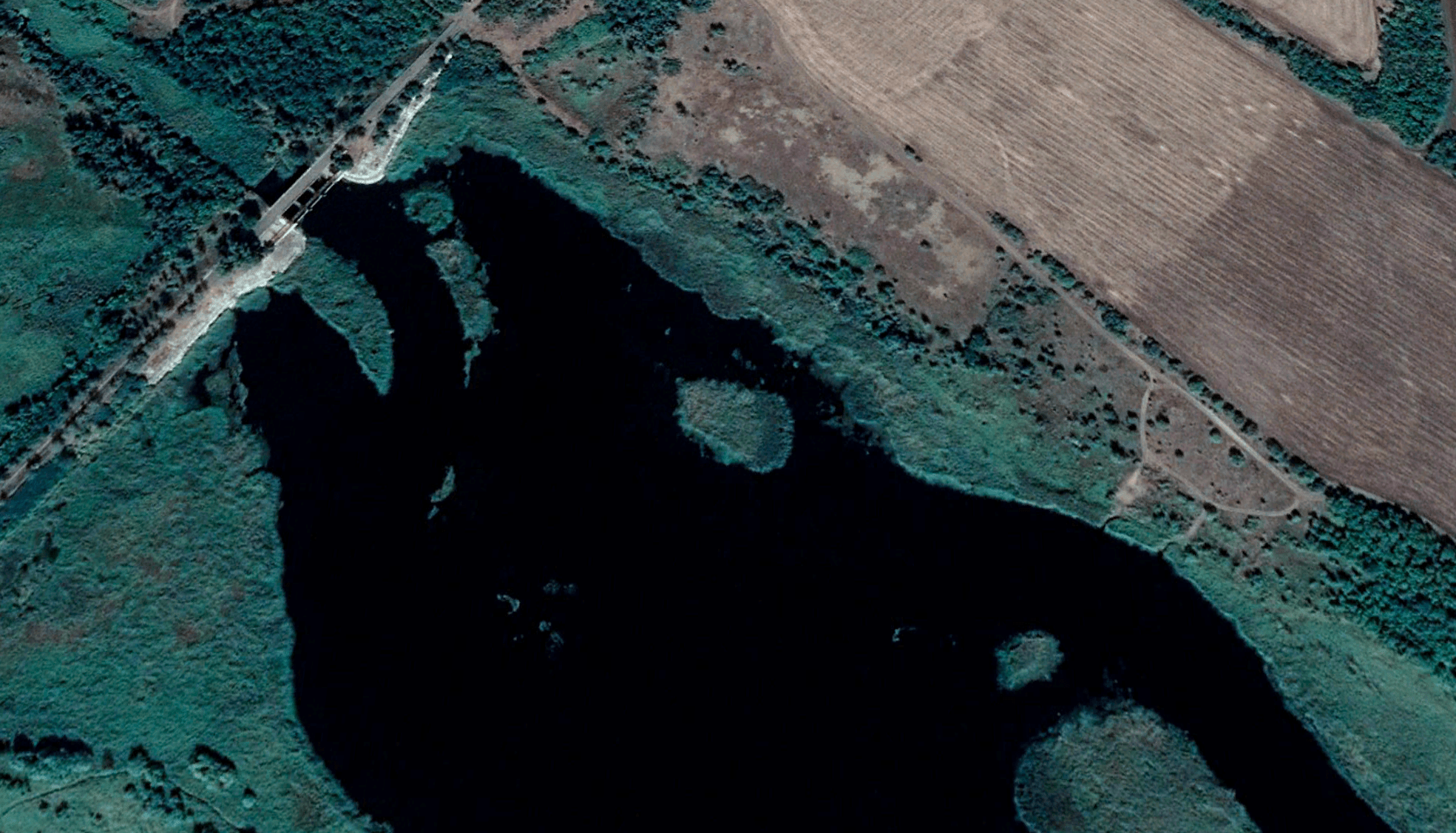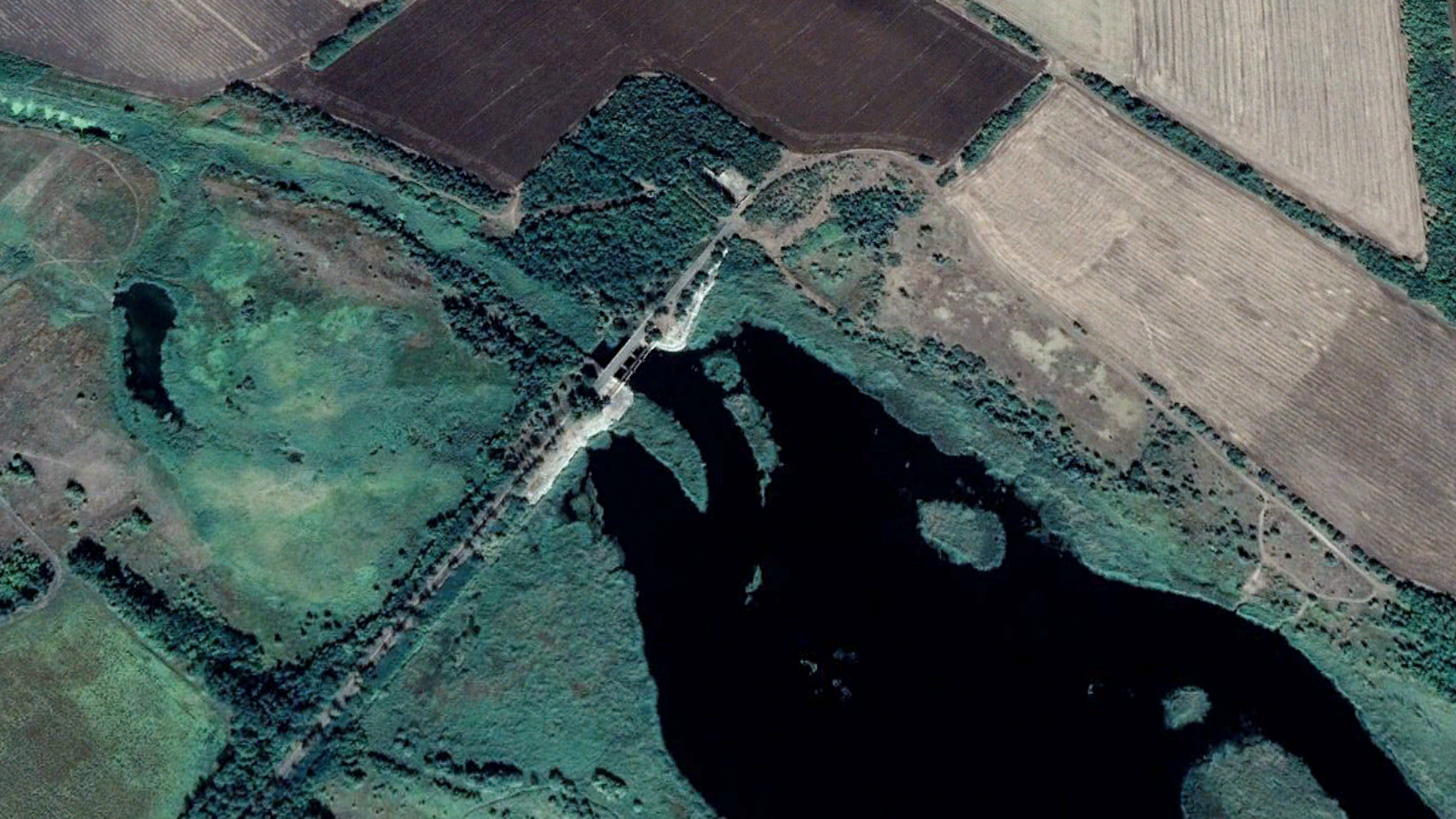Ukraine has accused Russia of blowing up another dam as part of its efforts to blunt the Ukrainian counteroffensive underway in the south and east of that country. Details are still emerging, but the dam in question is along the Mokri Yaly River, in western Donetsk, in a region where Ukrainian forces are said to have made their biggest gains. The incident comes six days after a significant portion of the larger Kakhovka dam was blown up, causing extensive flooding in the Kherson region, with both sides blaming each other for the destruction. You can read our coverage of the earlier incident here.
The exact location of the dam is in the village of Klyuchove, in Russian-held territory. So far, there has not been independent verification of the dam’s destruction, although a time-lapse video presented below, from the Sentinel Hub satellite data provider, does appear to show almost all the water leaving the Staromlynivske Reservoir behind the dam. While Ukrainian accounts suggest some kind of explosion breaching the dam, it remains possible that Russian forces may have simply opened sluices to drain the reservoir as quickly as possible.
Again, Kyiv has blamed Russian forces for the attack on the Mokri Yaly River dam, with Valeriy Shershen, a Ukrainian military spokesperson responsible for the western Donetsk sector, telling the Ukrainska Pravda news agency that it was blown up by occupation forces, causing flooding on both banks. According to Shershen, the Russians blew the dam to “slow down Ukraine’s counteroffensive,” but he also claimed they had failed in this aim.
“First, the occupiers blew up the Karlivka reservoir, then the Kakhovka Hydroelectric Power Plant, then they blew up other hydroelectric facilities in the occupied part of Zaporizhzhia Oblast, Shershen added. “In Zaporizhzhia Oblast, they expected a breakthrough by the defense forces, so to slow down our advance, they resorted to this tactic when they blew up the hydroelectric facility on the Mokri Yaly River again. However, this has not affected the advance of the defense forces.“

As the Ukrainian counteroffensive continues, the Ukrainian Armed Forces appear to have made particular progress along both sides of the Mokri Yaly River. Working their way southward from the town of Velyka Novosilka, the Ukrainians have declared a string of villages liberated from the Russians. These include Neskuchne, Makarivka, and Storozheve on the western bank of the river and Blahodatne on the eastern side. These are the first significant settlements to be regained since the counteroffensive began last week.
The recapture of Storozheve was welcomed yesterday by Hanna Maliar, Ukraine’s deputy defense minister, who issued a message of thanks to the marines responsible, before adding: “It will be the same with every settlement until we liberate all Ukrainian land.”
While it’s hard to find any confirmed information about how these villages were recaptured, especially since Kyiv has been very careful to release few details about the counteroffensive, the Ukrainian Armed Forces have published photos showing their soldiers raising flags in what are claimed to be recaptured villages.
At the same time, pro-Russian bloggers confirm that Ukrainian forces have made notable progress, including an overnight advance that this morning brought them to the next village along the river, namely Urozhaine, on the eastern bank. Urozhaine would appear to be an important capture, being located on the road that leads southeast toward the city of Mariupol.
Meanwhile, rescue efforts continue after the destruction of the Kakhovka dam and its hydroelectric station, and the catastrophic flooding that followed.
Kyiv states that the Kakhovka dam was blown up by a demolition charge placed inside it, by Russian forces — who controlled it at the time of the explosion — rather than by shelling. However, Western nations have been generally less willing to point the finger at any particular party.
The account from Ukrainian officials suggests that Russian forces blew up the dam as they moved from the eastern and southern banks of the Dnipro to other parts of the front line. Blowing the dam would, Kyiv claims, have made it harder for Ukrainian troops to cross the flooded lower Dnipro to confront the Russians.
Ukrainian authorities now say that the flood waters downstream of the dam are beginning to recede. Upstream, water continues to drain out of the reservoir, leaving huge areas of mud flats. In one macabre scene, it appears that human remains from World War II have now been uncovered. Although the veracity of the video cannot be confirmed, it seems to show skulls and helmets belonging to German soldiers who engaged in heavy fighting in the region during the conflict. Indeed, there is a long precedent for Moscow breaching dams in this area, which may have even contributed to the deaths of those German soldiers. During World War II, Soviet commanders destroyed bridges and a dam at Zaporizhzhia to prevent German forces from crossing the Dnipro River and slow their advance, killing many civilians in the process, too.
The loss of the Kakhovka dam led to concerns for the safety of the Zaporizhzhia nuclear power plant — Europe’s largest — although Ukraine’s environment minister, Ruslen Strilets, has said that the facility has sufficient water to keep its reactor cores and spent fuel cool.
Provided it can be proven in the future that Russia was behind the dam attacks, it would seem that these would the International Criminal Court (ICC) would consider these to be war crimes. After all, the ICC definition of a war crime includes “intentionally launching an attack in the knowledge that such attack will cause incidental loss of life or injury to civilians or damage to civilian objects or widespread, long-term and severe damage to the natural environment which would be clearly excessive in relation to the concrete and direct overall military advantage anticipated”. The ICC has already issued an arrest warrant for Russian President Vladimir Putin, for the alleged war crime of unlawful deportation of children and movement of children from occupied areas of Ukraine to Russia, so adding the dam attacks to the list would hardly be a surprise.
While we cannot say for sure at this point who was responsible for the destruction of the Kakhovka dam and the dam along the Mokri Yaly River, the ongoing counteroffensive is only likely to see the chances of such desperate actions increase. For Ukraine, this is a chance to take back more territory from Russia while making use of some of its more modern Western-supplied heavy arms. For Russia, meanwhile, even modest Ukrainian gains will strike a severe psychological blow and its military will use everything within its power to hold its lines.
Contact the author: thomas@thedrive.com
